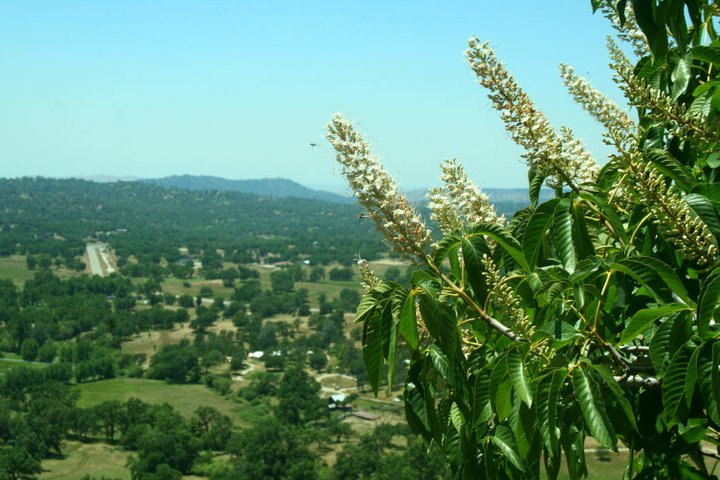Aesculus californica
California Buckeye
This small native tree is endemic to California and occurs in the Klamath and Coast Ranges from Siskiyou County south to Los Angeles County; in the Cascade Range and the Sierra Nevada foothills from Shasta County south to Kern County; and occasionally in the Central Valley. California Buckeye is often multi-trunked and grows 20 to 40 feet tall. It is a stunning specimen in flower but most striking in winter when its picturesque gray, twisting limbs are bare of leaves. It is quite tolerant of sun or shade, drought or water.
Wildlife value: The California Buckeye is a most important nectar source for butterflies. Its flower buds feed caterpillars of the Azure Blue while the nectar of the open flower draws many butterflies, including the California Sister, Great Purple Hairstreak, Western Tiger Swallowtail, and Mourning Cloak. Many other insects visit its flowers, and this brings the Black-headed Grosbeak and other songbirds along to forage for insects.
Uses: California Buckeye is sometimes used for lumber and paper pulp. Surprisingly, California Native American tribes ate Aesculus californica seeds as a staple food by roasting the seeds, mashing them, and finally soaking them in water to leach the poison. They also stunned fish for easy capture by placing seeds in nets or baskets in streams and other waterways.
*Warning: All parts of this plant are poisonous if ingested, and honey from California Buckeye flowers may be harmful.

